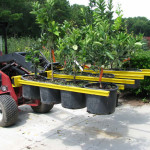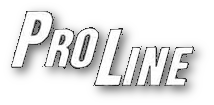 Landscape and Nursery equipment can increase efficiency and productivity while improving safety and product quality. Machinery can also bleed you dry if you make poor choices and don’t track expenses. Understanding how equipment produces a return can help nurseries and landscape professionals improve margins, minimize losses, reduce labor costs, and out-shine competitors.
Landscape and Nursery equipment can increase efficiency and productivity while improving safety and product quality. Machinery can also bleed you dry if you make poor choices and don’t track expenses. Understanding how equipment produces a return can help nurseries and landscape professionals improve margins, minimize losses, reduce labor costs, and out-shine competitors.
Measure Return on Investment
Track how well assets generate a profit by comparing net income to average total fixed assets. This step is particularly critical for nurseries and landscape businesses that own expensive equipment. In general, return on fixed assets should be greater than 5%. To calculate this value, simply divide net income by total assets.
Identify Non-performing Assets
To determine which assets are performing well, you need to track whether an asset is idle, how much it costs to maintain, depreciation, taxes, lost productivity, energy use, and so forth. Break down the dollars invested into each piece of equipment and compare that to dollars earned by that equipment. Calculate the return on the asset using the formula above.
Many people are surprised to find that old equipment that is “paid for in full” is draining resources through maintenance needs, inefficiencies, and production bottlenecks. When purchasing, keep in mind that some equipment depreciates faster than other equipment. In general, the more complicated something is, the faster it will depreciate. Simple equipment can last an entire career without any real maintenance costs, and thus is considered value-added because it can truly be “paid for in full” at some point. Examples of such equipment include tree movers, quality irrigation equipment (e.g. hoses), grabbers, and basic hand tools.
Benchmark Peers
Understanding how well your assets perform compared to others in your industry can be a great way to determine if investments are paying off. Get your industry code from the NAICS at the U.S. census website and use that code to probe online benchmark services like BizRate. Ask your banker to provide a financial benchmark for you.
Don’t Be Afraid to Share
One of the best ways to improve the ROI of an idle asset is to share it. It may seem counterintuitive to assist competitors by leasing equipment, but the goal is to increase income and reduce idle capacity. Sharing is a two-way street and can apply to everything from inventory to equipment to warehouse space. Not only does sharing improve ROI, it improves business relationships as well.
Don’t Price with Competitors
A common problem in generating good ROI is setting prices based on what competitors charge. Two companies may have two different prices because they have completely different cost structures. The only way to price services accurately is to understand expenses.
Resources
http://www.usbankconnect.com/article/maximize-return-assets-six-steps-profits-property-plant-equipment-assets
http://www.golmn.com/ensure-your-customers-not-your-profits-cover-your-equipment-costs/
www.census.gov/eos/www/naics/

